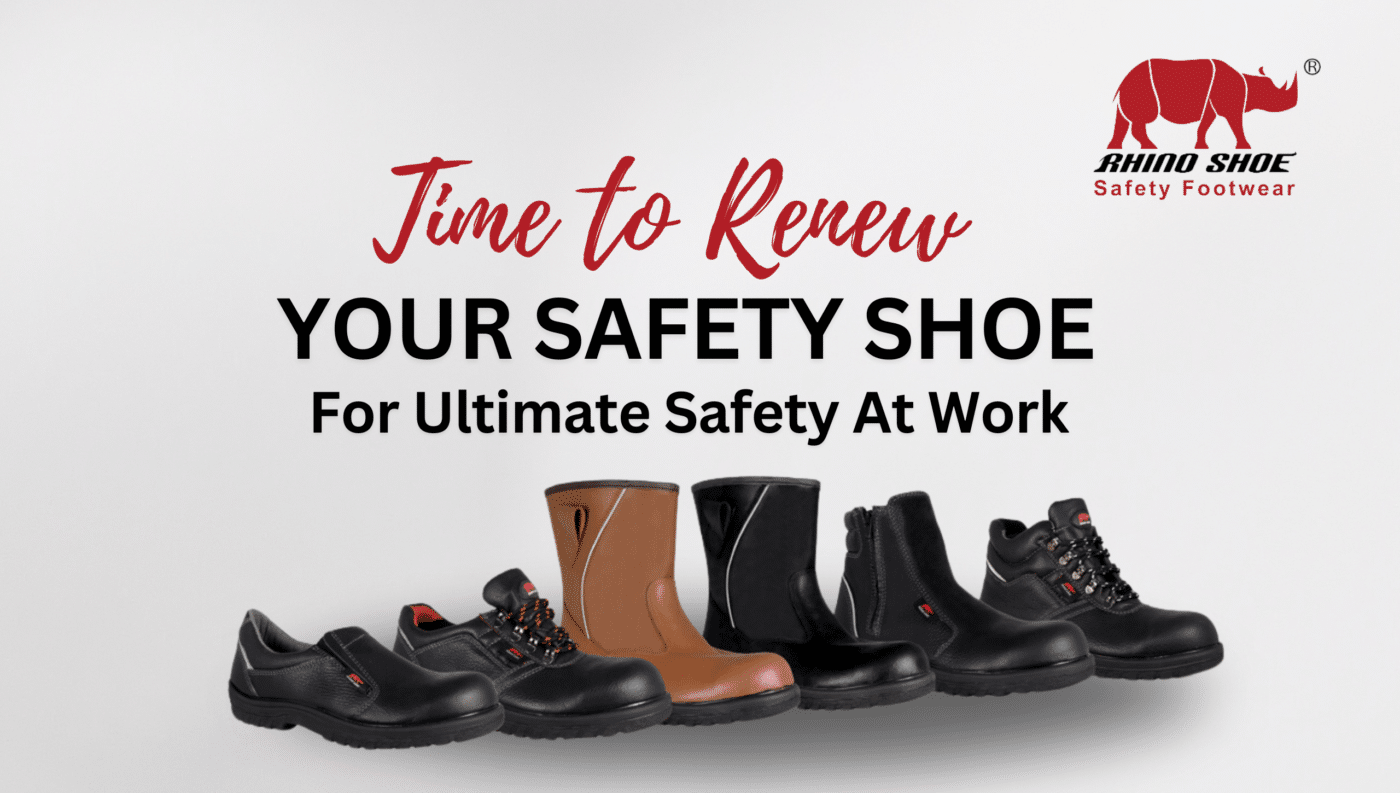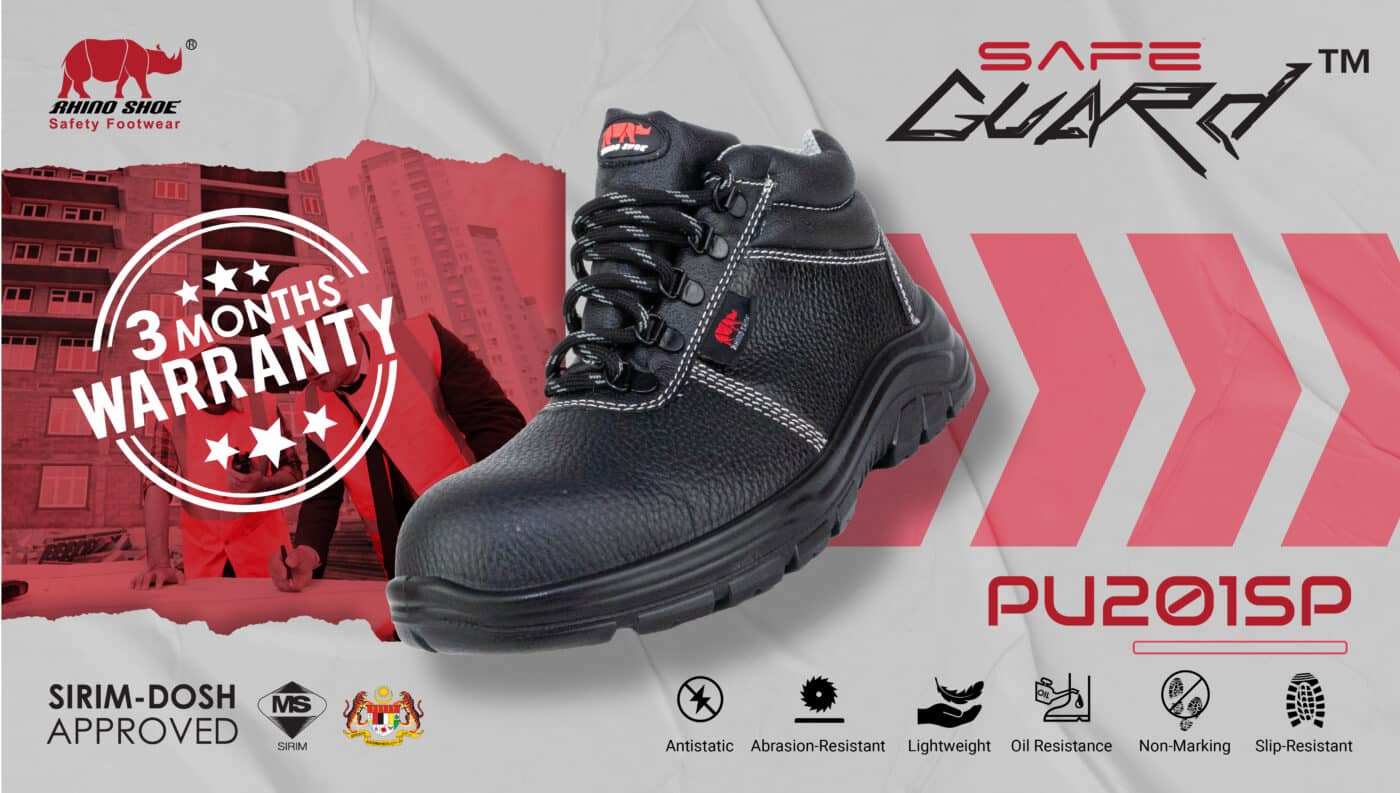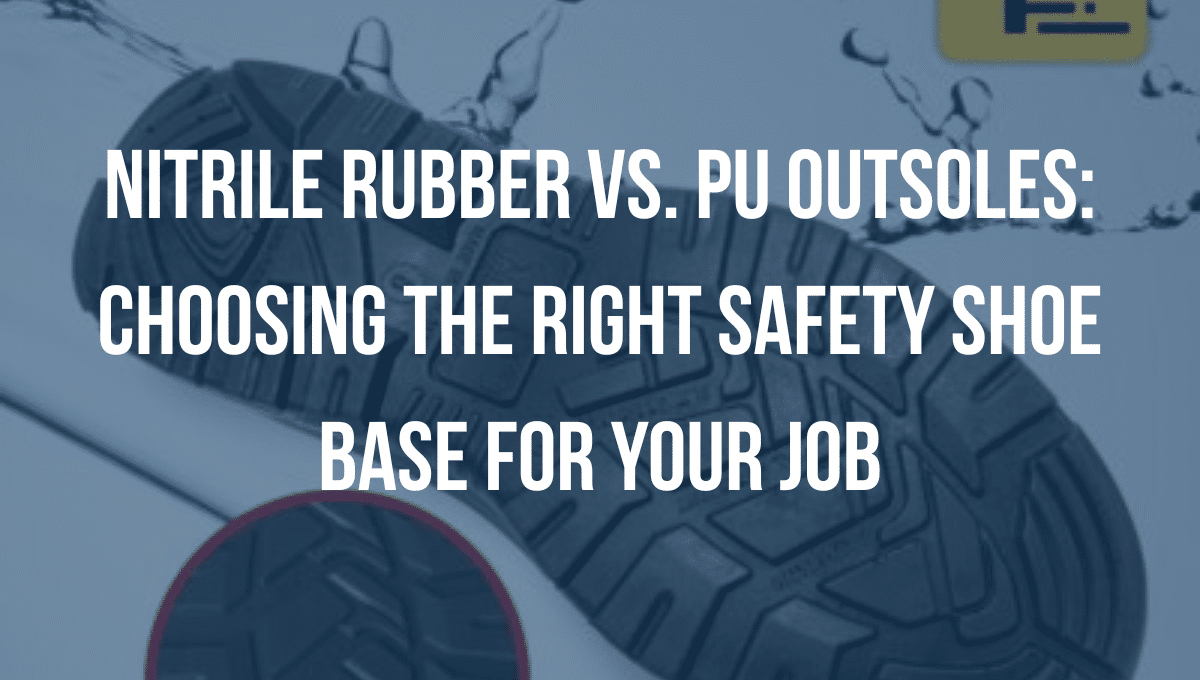The outsole is the foundation of any safety shoe, directly impacting grip, durability, and comfort. With materials like nitrile rubber and polyurethane (PU) dominating the market, understanding their differences is key to selecting the right footwear. Safetyware, a leader in industrial safety, uses both materials strategically across its product lines. Let’s break down their pros, cons, and best applications.
1. Nitrile Rubber Outsoles: Built for Tough Conditions

Key Features:
- Oil/Chemical Resistance: Nitrile rubber excels in environments with oils, fuels, and solvents, making it a top choice for automotive workshops, chemical plants, and oil rigs.
- Durability: Resists abrasion and withstands extreme temperatures (300 C), ideal for heavy machinery and outdoor work.
- Slip Resistance: Deep treads provide superior grip on wet, oily, or uneven surfaces.
Safetyware’s Nitrile Rubber Offerings:
- Ultranite UN101SP: Low cut, anti-static safety shoes with Fiberglass toe cap and Anti-Penetration Fabric that provide high level of protection against penetration.
- Ultranite UN302SP: Heavy-duty boots for mining and construction, featuring reinforced nitrile outsoles.
Limitations:
- Heavier than PU, which may cause fatigue during long shifts.
- Less cushioning compared to PU.
2. PU (Polyurethane) Outsoles: Lightweight Comfort

Key Features:
- Lightweight: Up to 30% lighter than rubber, reducing leg fatigue in jobs requiring walking or standing (e.g., healthcare, warehousing).
- Cushioning: Absorbs shock effectively, ideal for concrete floors or repetitive movements.
- Flexibility: Mimics natural foot movement, enhancing comfort for 12-hour shifts.
Safetyware’s PU Offerings:
- VoltGuard EH101KP: Electrical hazard-rated boots with nitrile soles for oil-resistant traction in utility work.
- Flexiguard IV102KP: White upper Safety Shoes with ESD features that suitable in cleanroom enviroments
Limitations:
- Less resistant to oils and sharp objects than nitrile rubber.
- Degrades faster in high heat environments (above 80°C).
3. Side-by-Side Comparison
| Feature | Nitrile Rubber | PU |
|---|---|---|
| Weight | Heavy | Lightweight |
| Durability | Excellent (2–3+ years in heavy use) | Moderate (1–2 years with daily wear) |
| Slip Resistance | Superior on oily/wet surfaces | Good on dry/even surfaces |
| Chemical Resistance | Resists oils, fuels, acids | Vulnerable to solvents and hydrocarbons |
| Comfort | Firm support | Plush cushioning |
| Best For | Manufacturing, mining, utilities | Healthcare, retail, light industrial |
4. Choosing the Right Outsole
Ask these questions:
- What hazards are present? (Oils? Sharp debris?) → Nitrile for durability.
- How long are workers on their feet? → PU for comfort.
- Indoor or outdoor? → Nitrile for uneven terrain; PU for smooth floors.
Conclusion

Nitrile rubber and PU outsoles serve distinct purposes. While nitrile dominates in rugged, high-risk environments, PU prioritizes comfort for less hazardous settings. Safetyware’s engineered designs ensure both materials meet global standards like EN ISO 20345 and ASTM F2413.
Step confidently—choose Safetyware’s purpose-built soles. 👞🔧
Any Questions? Contact Us:
📩 Email: [email protected]
🌐 Website: www.safetyware.com
📞 Contact us: WhatsApp

